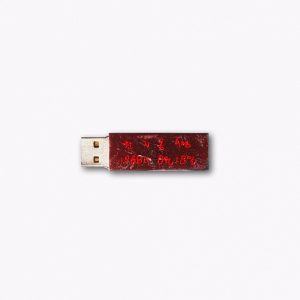 These days, we find ourselves reaching for CD players less and less; instead, we rely on digital means with our laptops or phones to play the newest releases. This is why when G-Dragon released the physical version of latest album Kwon Ji Yong via a USB, it generated a lot of buzz. It seemed to be the innovative solution to the dying CD players — a USB could be used via a computer to play the songs; that is, until we realised that the USB contained only a link, which was to be used to download the creative content released. This raised quite a few eyebrows, and most importantly, begged the question: was it a digital or physical album?
These days, we find ourselves reaching for CD players less and less; instead, we rely on digital means with our laptops or phones to play the newest releases. This is why when G-Dragon released the physical version of latest album Kwon Ji Yong via a USB, it generated a lot of buzz. It seemed to be the innovative solution to the dying CD players — a USB could be used via a computer to play the songs; that is, until we realised that the USB contained only a link, which was to be used to download the creative content released. This raised quite a few eyebrows, and most importantly, begged the question: was it a digital or physical album?
The line between the two seems to be unclear but for the most part, we can mostly agree that a physical album consists of a tangible, physical object that would contain the artist’s musical content. This differs from a digital album, where online access is required to download and save the music onto a computer or a phone. What’s tricky about classifying Kwon Ji Yong as one or the other is because it does come in physical form as a USB; however, it is a multi-step process, since users would need to click into the download link, which would bring them to a website, and only after inserting a unique serial number, would they be able to download the music and any other additional content such as photos. In short, it seems to be a means for listeners to download the album, and as such, the album itself consists of elements that fall both within the physical and digital categories.
 The Korean Music Content Industry Association (KMCIA) which governs the Gaon Chart, has made it clear that G-Dragon’s latest album would not be eligible for the Gaon Album Chart, and would only be considered for the Gaon Digital Chart, since the USB itself does not hold any music: “If we include digital albums in the same category with hard copy albums, it breaks the boundaries that segment the digital chart, the download chart and the album chart.”
The Korean Music Content Industry Association (KMCIA) which governs the Gaon Chart, has made it clear that G-Dragon’s latest album would not be eligible for the Gaon Album Chart, and would only be considered for the Gaon Digital Chart, since the USB itself does not hold any music: “If we include digital albums in the same category with hard copy albums, it breaks the boundaries that segment the digital chart, the download chart and the album chart.”
However, both G-Dragon and his label YG Entertainment have expressed disapproval towards KMCIA’s decision. The artist took to Instagram to defend his album:
What is the fundamental reason of categorizing my work into an album or not by somebody who can’t tell the difference? Well, there must be advantages and disadvantages, but the form of the outer appearance of music has been changing from cassette tape to CD and now downloading files online and what is important here is the song and lyrics that will stay forever in the ears and hearts of listeners.
YG supported its artist, calling the association’s decision to consider physical albums as only physical discs to be old-fashioned. Hanteo, another album sales charts, has decided to recognise the album in their album category.

The issue at play here does not seem to be with the fact that the album was released in a USB format like YG Entertainment has expressed its concerns over, rather, that the drive itself did not have any music that could be accessed offline. This aspect of the download link seems to go against the most fundamental requirement of a physical album where listeners can use some sort of device to listen to the music without having to go online. Most netizens online do agree that having the album dropped in a drive format is an incredibly innovative idea that would fall within the category of physical album — had the content been saved on the drive. In fact, not having it on the drive seems to defeat the whole purpose of distributing the album in USB flash drives, which are traditionally used to transfer and store files.
Taking a closer look at the sales of physical albums compared to that digital albums and their larger impacts, it appears that physical albums are sold as a form of merchandise and are generally more profitable to the artist and their company. However, they tend to represent a smaller percentage of total sales, and only a few artists or artist groups can generate sizeable revenue from physical albums. Furthermore, many fans will purchase multiples of an album in order to participate in a fansign, which may skew album sales even more.
When we consider charts, we have to understand that there are different types of charts, which employ different methods of ranking. Taking the Gaon charts, for example, there are physical and digital charts. The former ranks albums by the sale of physical albums, and even then, the chart is subcategorised into “all music”, “domestic”, and “international”, showing the ranking of the best-selling physical albums in total, domestically in Korea, and internationally respectively. The digital chart, however, does not just take into account digital downloads of the music. It is a combination of downloads, streaming, and the use of the music in background tracks (like on television shows). Again, this category is subdivided into “all music”, “domestic”, and “international”.
In conclusion, aside from the claims of the substandard quality of the flash drive itself, G-Dragon’s Kwon Ji Yong does have aspects of both physical and digital albums. The album can be considered physical because it can be and is sold as merchandise with a physical representation of the music available for purchase. However, because it requires users to download the music online, this goes against the most basic requirement of a physical album — to be able to access the music anywhere and anytime without requirements of online access or downloading whatsoever. In this regard, I would agree with KCMIA’s decision of not considering it to be a physical album. Although this decision may hurt and eliminate his chances of ranking on the physical charts, it does not hinder his position on the digital charts in which he is dominating.
The USB release is really a great and innovative idea. Serving to update our definition of physical albums, G-Dragon attempts to bring back physical album sales with a more easy-to-use and extremely accessible flash drive, so it is a pity that it was not done just right, but I’m looking forward to see whether another artist will come forward and rectify the weaknesses of this type of release.
(The Korea Times, Nate, Naver, Hanteo, Images via YG Entertainment)



